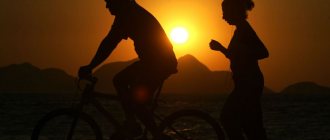When is the best time to go to Asia?
To see the Temple of Dawn in Bangkok with your own eyes, click on the photo
Asia is the largest part of the world both in terms of territory and population. Almost all types of climate are represented here - from arctic in the far north to equatorial in the southeast. In East, South and Southeast Asia the climate is monsoonal, in Western Siberia it is continental, in Eastern Siberia and Saryarka it is sharply continental, and on the plains of Central, Central and Western Asia it is semi-desert and desert. The southwest of this part of the world has a tropical desert climate, the hottest in all of Asia, and the Indian town of Cherrapunji in the Himalayas is the wettest place on the planet.
Relax on the heavenly beaches of Thailand, lose your mind at the skyscrapers of Hong Kong, find a new self in fabulous Bali, see the unearthly landscapes of Nepal or visit another planet in Japan - there are countless reasons to go to Asia. There's a lot to consider when choosing the best time to travel to Asia, but we'll help you figure it out quickly and create the adventure of the century.
The peak tourist season in Thailand runs from November to mid-February. It coincides with ideal sunny, rain-free weather in most Thai resorts. Only on Koh Samui the high season lasts from spring to early autumn.
If you go to Thailand in mid-April, having fun with the locals while celebrating Thai New Year is an unforgettable experience.
Tropical cyclones rage from May to mid-October. The rainiest months in Thailand are August and September.
• When is the best time to go to Thailand?
• Beaches, elephants, islands and 12 more reasons to rush to Thailand
• Wintering in Thailand: instructions and current prices for housing and food
The best time to travel to Vietnam is spring (February to April) and autumn (August to October). During these months there is less rain and no unbearable heat.
In the north of Vietnam (Hanoi, Ha Long Bay) the weather is changeable. The cool season lasts from November to April, the hot season from May to October. In February and March there is often drizzling rain.
In Nha Trang and central Vietnam, from February to August there is a dry season with clear weather and air temperatures of +30–35 °C. In mid-December there are heavy rains, and in October-November typhoons often rage.
Ho Chi Minh City, Mui Ne and Phu Quoc Island are warm all year round. From November to January the temperature is slightly lower, from February to May it is very hot. The rainy season lasts from May to October.
• When is the best time to go to Vietnam: weather and tips by region
• Staying for the winter: how to go to Vietnam for the winter and how much it costs
• 13 ways to understand Vietnam
In general, Indonesia has two seasons: the dry season from April to October and the rainy season from November to March.
Indonesia is most visited by tourists in July and August, but if the company of other holidaymakers just lifts your spirits, this is a good time to travel: in the second half of summer there are many festivals and parties on Bali and other Indonesian islands.
• Learn more about the seasons and weather in Indonesia
• Eat Pray Bali. 12 ways to enjoy Indonesia's most fabulous island
• What to see in Indonesia, besides Bali
The best time to travel to Beijing, Harbin, northern China, Chengdu and the center of the country is April-May and September-October.
It is better to go to Tibet from June to August, and to Hong Kong, Shanghai and Hainan Island - from October to December.
• Learn more about seasons and holidays in different parts of China
• 15 places in China that cannot be forgotten
• Two holidays for the price of one. Why Hong Kong is not just an air hub, but a city where everyone should visit
The worst time to travel to India is the monsoon season from July to October. The best time to travel to New Delhi, Agra and Kolkata is from late October to January.
Goa, Mumbai, Rajasthan, western and central India have good weather from November to March.
The best time to travel to Ladakh and the Himalayas is from February to May, and to Kerala from September to March.
The best time to travel to Chennai and the Bay of Bengal coast is January-March.
• Learn more about the seasons and holidays of India
• Fairytale country: 15 ideas on how to spend a holiday in India
• Planet Goa: 12 reasons to go to the sea in India
If you can’t stand extreme heat, it’s better to go to the UAE any time, except from May to September, when during the day the thermometer often shows above +40 ºC.
The best time to travel to Dubai, Abu Dhabi and other emirates is March-April and November-December.
The UAE is a Muslim country, so many attractions, shops and restaurants may be closed during Ramadan.
• 12 ways to get to know the United Arab Emirates
• Dubai: what to do and best time to go
• 8 best beaches in Dubai
The climate in different parts of Israel differs significantly: there are subtropical zones, arid zones and even desert zones.
The high season in Israel is the period from late February to May and all autumn. There are especially many people from the second half of September to the end of October - when Rosh Hashanah (Jewish New Year) and Sukkot (Feast of Tabernacles) are celebrated.
The low season in Israel is winter, when it rains, and summer, when the thermometer exceeds +40 °C.
When is the best time to go to Israel?
South Korea is good and interesting all year round: there is something to do in any weather.
Winter here is snowy and quite cold - down to –10 °C. Only on Jeju Island is it humid and the air temperature does not drop below 0 °C even in winter. The ski season at Korean resorts opens at the end of November and lasts until the beginning of April.
Summer in Korea is hot and humid. The monsoon season, Chanma, lasts from the end of June to the end of July. The best time to go to the beaches of the Korean coast is from late May to September.
Spring and autumn in South Korea are good for excursions, shopping and walks: sakura begins to bloom in March, and in October it’s great to admire the red maples.
• When is the best time to go to South Korea?
• The best of Seoul. What to see in the capital of South Korea
• 12 ways to confess your love for South Korea
From April to August there is the least rain in Singapore, but you can go to the Lion City all year round: it is always summer here.
Singapore is constantly hosting vibrant festivals - don't miss the Independence Day parades and fireworks on August 9th. Singaporean shops and restaurants close only on the first couple of days of the Chinese New Year; all other national holidays, on the contrary, are held with open doors and public festivities.
• Singapore in 3-4 days: getting to know each other
• 7 ways to save money in Singapore
• 11 reasons to believe in the miracle of Singapore
The Philippine Islands have three seasons: - tag-init, or tag-arav - from March to May: at this time the islands are hot and dry; - tag-ulan - from June to November: this is the rainy season; - tag-lamig - from December to February: during these months the Philippines is dry and cool.
The weather on different islands of the archipelago varies slightly and depends only on the relationship to sea level: the higher you go in the mountains, the cooler it is.
The high season in the Philippines lasts from November to May, especially around Christmas and New Year. At this time, the weather is great, but there are crowds of tourists at the resorts, and prices for hotels, air tickets and services are rising.
The cheapest time to fly to the Philippines is from June to October. True, the islands are often hit by downpours and typhoons at this time, so such a vacation certainly cannot be called cloudless. But hotel prices fall by 30–50%.
• When is the best time to go to the Philippines?
• Miracle Islands: 15 reasons to fall in love with the Philippines
• Cheapest island paradise
The cherry blossom season in Japan lasts about a week from late March to early April. The spectacle is magnificent, but during hanami prices for tickets and hotels skyrocket.
Summers in Japan are incredibly hot, so the best time to travel to Tokyo, Kyoto and other Japanese cities is in early autumn or during the momiji red maple season.
But “Golden Week” (usually it falls in the last week of April or early May) is best avoided: at this time, the Japanese themselves travel around the country to celebrate national holidays with friends and family - hotels and restaurants are packed to capacity.
• More information about the weather, holidays and holiday seasons in Japan
• 16 ways to unravel Japan
• 8 ways to see Tokyo from different angles
The Maldives is located near the equator, so the air temperature is approximately the same all year round. Typically, there are two seasons in the Maldives: - the dry winter monsoon of Iruwai - from November to April ; - humid summer monsoon Hulhangu - from May to October .
The least rain falls from January to April—this is the high season for holidays in the Maldives. Maldivian beaches are more crowded in winter than in summer. In December, people fly to North and South Male and other atolls to celebrate the New Year. As a result, prices for hotels and air tickets increase during these months.
Summer in the Maldives can be cloudy and rainy. But the showers come mainly in the afternoon, and the sun comes out in the morning, so you can still have a good rest. The only thing is that the water in the ocean is more cloudy in summer than in winter: this will be a problem for diving. Accommodation prices in the Maldives in the summer months are lower than in the high season, so this time is suitable for an economical holiday.
• When is the best time to go to the Maldives?
• 14 things to do in the Maldives
• Dolphins outside the window: unique underwater hotels in the world
The cheapest tickets to Asia
Hotels in Asia with good reviews
Optimal time to work and communicate on the Internet
Research has shown that emails sent early in the morning (for example, around 6 am) are more likely to be read by the recipient. It's like reading a newspaper at the beginning of the day.
Reading Twitter at 8 - 9 am allows you to start the day on a cheerful note. At this time, the overwhelming number of messages are filled with optimism, positive emotions and energy.
It is better to work on social networks after lunch. Researchers note that the highest number of retweets occurs between approximately 3:00 pm and 6:00 pm. At this time, it is easier for people to share someone else’s post than to create their own.
The most “liked” time is 8 pm. Most people are returning home or have already finished dinner. When the working day is over, you can relax and share your emotions. So it’s time to “smack the hearts.”
Between 10 and 11 p.m., Twitter becomes one big emotional flood. At night, people are more relaxed and capable of empathy. They generate emotionally rich messages, both positive and depressive.
When is the best time to go to Africa?
Cheap tickets to Kenya - by clicking on the photo
Africa is the second largest continent after Eurasia. From the north it is washed by the Mediterranean Sea, from the northeast by the Red Ocean, from the west by the Atlantic Ocean, and from the south and east by the Indian Ocean. Africa is also the name given to the part of the world that consists of the continent of the same name and adjacent islands. The African continent crosses the equator. In addition, it is the only continent that stretches from the northern subtropical climate zone to the southern subtropical climate zone. Africa has little rainfall and glaciers - due to lack of irrigation and aquifers in mountain systems, there is virtually no natural climate regulation anywhere except the coasts.
Find out if it's always hot in Africa and when is the best time to go to Egypt, Morocco, Kenya or South Africa!
From June to August, the air temperature in mainland Egypt steadily rises to +40 °C. At this time of year, only the hardiest will survive an excursion to Luxor, Aswan or Cairo.
Along the coast, the climate in summer is milder: if you can tolerate the sun well and are ready to swim only in the morning and evening, you might even like it on the Red Sea in June.
If you don’t want to endure the heat, take a look at the resorts on the Mediterranean coast of Egypt - in the summer it’s several degrees cooler there. It is more comfortable to travel to the White Desert from October to April. In general, the best time to visit Egypt is autumn and spring.
• More than the pyramids: 10 fresh ideas for a vacation in Egypt
• Where to relax in Egypt: top 14 best beaches
• What to do and see in Cairo. 9 cool ideas
• How much does a vacation in Hurghada cost? Prices for tickets, accommodation, food, transport, beaches and diving
• Where to go instead of Egypt
The best time to travel to Morocco is from March to May and from September to October. These are ideal months for beach holidays, city tours and trips to the Atlas Mountains and the Sahara Desert.
The best period for surfing in Morocco is from October to April.
Morocco is a Muslim country, so many attractions, restaurants and shops may be closed during the holy month of Ramadan. Ramadan dates in 2020 are from May 6 to June 4, in 2020 from April 24 to May 23, in 2021 from April 13 to May 12.
• 13 best things to do in Morocco
• Blue courtyards of Moroccan Chaven and other amazing streets from around the world
• Surfing in Morocco: how to make your dream come true at minimal cost. Personal experience
In Madagascar the whole year is +20-26 °C. But the weather in different parts of the island can differ markedly on the same day. In the east of the country, where the monsoon blows, it is rainier than in the central highlands. In the northwest it is even drier and hotter, and in the deserts of the south of Madagascar the climate is completely arid.
The best time to travel to Madagascar is May-October, when the island has a dry season. The rainy season in Madagascar lasts from December to March.
If your dream is to see newborn lemurs, plan your trip to Madagascar between October and December.
• 11 things that surprise Madagascar
• 19 places you need to see before they disappear forever
• Where to go to the sea without a visa
The best time to travel to Kenya is from July to September: these months are usually dry, sunny and you can see a lot of wild animals on safari.
From September to mid-December, short rains often occur in Kenya.
January and February are nice but hot: this is the best time to sunbathe on the beach.
But from March to June, prolonged rains pour throughout almost the entire country, which wash away dirt roads in Kenyan national parks.
• Cross the equator, feed a giraffe and 10 more reasons to rush to Kenya
• Where to swim in winter: 14 hot countries where you can escape the cold
• Up! 15 Best Places for Paragliding and Hot Air Ballooning
The Seychelles is one of those magical places where summer lasts all year round. Even in the low season - from November to April - you can swim and relax on the beach in the Seychelles. There are rains and even storms, but they pass quickly.
If you do not tolerate heat and high humidity, it is better not to fly to the Seychelles in winter: acclimatization may take your entire vacation.
During the dry high season in the Seychelles, the air rarely warms up by more than +30 °C, and the water - above +26 °C.
The best time to vacation in the Seychelles is from May to October: at this time the archipelago has ideal conditions for both swimming and surfing. It is better for divers and birdwatchers to go to the Seychelles in spring or autumn. To see whale sharks and watch giant sea turtles lay eggs, fly to the Seychelles in October.
• 9 ways to remember Seychelles forever
• The best beaches in the world
• Delightful secret beaches: where to sunbathe without crowds of tourists
The best time to travel to Tanzania is June-October, when it is dry and not too hot.
The rainiest months in Tanzania are March, April and May: it can rain all day long and many roads become impassable, especially in the south of the country. In November–February there are also rains, but as a rule they end quickly. If you come to Tanzania during the rainy season and want to go on a safari, choose from the national parks in the north of the country: there the wet season is less noticeable.
Plan your safari in the Serengeti Park for June–July if you want to catch the great migration of animals, or January–February if you dream of seeing newborn ungulate calves.
When going to Tanzania, remove all packages from your luggage: as of June 1, 2019, they are prohibited from being stored, used, or brought into the country. Transparent plastic cosmetic bags are not subject to the ban because they are reusable.
• 10 good reasons to travel to Tanzania
• Hottest holiday destinations this year
• What vaccinations are needed for the trip?
• What not to do at airports around the world
• Zanzibar in Tanzania and other unexpectedly accessible paradise islands
The ideal time for whale watching in South Africa is from July to November.
The best time to visit Kenya's oldest game reserve, Kruger Park, is from May to August, when the weather is dry and warm. From November to March it rains here: if you do not use repellents and mosquito nets, there is a risk of contracting malaria.
The fewest tourists in South Africa are from March to May. And the peak tourist season occurs in the hottest months - November and December, especially many travelers fly to South Africa for Christmas.
• 13 reasons to holiday in South Africa
• Where to see pandas, koalas and other cute creatures
• Ideal wine tour: where to go in the fall for the best wine in the world
The cheapest flights to Africa
Cheap hotels in Africa
Training at different times of the day: choosing the best option
There is no universal answer to the question about the best moment for sports activities: training at any time of the day has its advantages and disadvantages. It all depends on the individual characteristics of the body, life routine and other related factors.
Cheerful morning: what early workouts give
Sometimes the morning is the only time for sports activities. Early workouts are ideal for early risers and are a good option for pigeons, but night owls should look for a later time for sports.
Morning workouts have a number of features that you should be aware of:
- After waking up, the body's glucose level is reduced. This is due to the fact that at night a person did not replenish energy reserves, and had to spend them even during sleep.
- The morning hours are when the production of the stress hormone cortisol peaks, one of whose functions is to help us wake up.
- During sleep, the joints are motionless, so the production of synovial fluid in them decreases. Therefore, immediately after waking up, joint elasticity and mobility are somewhat limited.
- Since the body's moisture reserves are depleted overnight, the blood is thick and viscous in the morning. It is more difficult for the heart to pump it throughout the body.
- The human body temperature is lower in the morning. Because of this, muscles and ligaments are less elastic compared to their condition during the day and evening.
- When a person sleeps, his intervertebral discs do not experience compression load, so during the night they manage to absorb more fluid, increasing in volume. As a result, the pressure inside the discs increases in the morning, and at the same time the likelihood of spinal injury.
Taking into account these factors, it is clear that early training requires a particularly thorough warm-up. After waking up, you need to thoroughly stretch your joints, ligaments and muscles, and only then start training. It wouldn’t hurt to use a “passive” warm-up - a warm shower.
Before exercising, you should drink a glass of water: this will reduce blood viscosity, activate blood flow in the body and prepare the heart for physical activity.
Morning workout requires a thorough warm-up
Cardio training immediately after waking up is not advisable. At this time of day, preference should be given to activities at a slow and moderate pace. Under no circumstances should you exercise on an empty stomach.
Strength training is also possible in the morning. When starting such activities, you need to eat a little protein-carbohydrate food: this will avoid hypoglycemia, and therefore weakness and nausea during strength exercise. Proper preparation will help you conduct an intense and high-quality workout, since daytime fatigue has not yet accumulated.
A prerequisite for morning strength training is a leisurely, thorough warm-up and a long series of warm-up sets. Here it is advisable to avoid movements that are traumatic for the back. It is recommended to move deadlifts, standing presses and squats with heavy weights to another time of day.
Moderate cardio in the morning helps you lose weight
Elevated cortisol levels in the morning will “stimulate” metabolism, so calorie expenditure during and after an early workout will be higher than during a similar workout in the afternoon or evening.
Video: Features of organizing morning workouts
Daytime workouts
Representatives of all chronotypes can afford sports activities during the day. By this time, physiological indicators have time to stabilize, muscles and joints warm up and gain elasticity. Research confirms that the period between 16 and 18 hours is most optimal for strength training. During these hours, endurance and strength reach high levels, and the likelihood of injury is minimal.
Despite the obvious benefits of daytime workouts, few people can exercise without regard to their work schedule. A gym located in close proximity to the place of work may be a way out. If you wish, it is quite possible to squeeze in a 30-40 minute strength training session into your lunch break. To do this, you will need to think through a clear plan for each lesson in advance.
To save time, it is optimal to use the superset method. During such a workout, exercises are performed one after another without pauses for rest. The movements in the set should be for one muscle group or for the development of antagonist muscles (chest-back, biceps-triceps).
Gyms are rarely crowded during the day, so you can do a circuit workout during your lunch break. It is important to perform all exercises without pauses or with minimal rest.
A significant advantage of daytime training is the comfort of the regime: there is no need to get up early, and the evening will remain free.
Working out during your lunch break saves a lot of time.
Better late than never: evening fitness classes at the gym
In the evenings, the gyms experience a peak in attendance: most people come here after work.
From a physiological point of view, training in the evening is quite convenient: muscles and ligaments that have been warmed up during the day are less susceptible to injury. In addition, physical activity (both anaerobic and aerobic) helps to get rid of the tension that has accumulated during the work day.
In the evening, unlike classes in the morning or at lunch, you can allow yourself a leisurely pace of class: after training, there is no need to rush anywhere.
Adherents of late classes should know about the nuances of their organization:
- If the working day is spent in conditions of inactivity, when you come to the gym, you don’t need to rush “right off the bat”: first you need a good warm-up.
- Running hungry from the office to the gym is not the best solution. Before training (especially if it is strength training), it is important to have a protein-carbohydrate snack.
- After class there should be time to prepare for bed. Physical activity 2-3 hours before sleep will improve its quality, but you should not do it later - in this case, on the contrary, an agitated body may have problems falling asleep.
Evening time is suitable for strength training
Evening workouts, despite their popularity, have a number of disadvantages:
- Late classes are not suitable for early risers: their performance at this time is reduced to a minimum.
- High attendance at the halls at this time does not always allow us to fulfill our plans in full. Therefore, it is worth thinking about alternative exercises in advance so as not to waste time waiting for free equipment.
- Fatigue accumulated during the working day contributes to weakening of mental concentration during movements. This can lead to disruption of technique and reduce the effectiveness of training.
Fatigue accumulated during the day can reduce the effectiveness of an evening workout
You can choose the optimal moment for training in a practical way by experimenting with classes at different times of the day. You need to listen to the signals given by the body and combine this information with the peculiarities of your work routine.
Is it possible to train at any free time?
It happens that an unpredictable schedule does not allow you to train at the same time according to a clear schedule. This is not a reason to quit the sport, but you will have to show some flexibility and ingenuity when building a training plan.
In fact, the priority is the regularity of classes, not the timing of them. Having set yourself the goal of training 3-4 times a week, you need to ensure that the required number of sessions “fits” into your unpredictable work schedule. There is absolutely no need to be “attached” to daytime or evening workouts: you can use any free time for sports if it does not run counter to individual biological factors and will require more detailed planning than predictable ones.
- Many gyms rent storage units for sports uniforms to their clients for a small fee. In the absence of a clear schedule for classes, this service can be useful: you don’t have to constantly carry extra clothes and shoes with you in the hope that you will have a free moment for sports.
- For those who travel by car, it is advisable to have an additional training kit in it. You need to accustom yourself to the idea that you can improve your physical fitness not only in the gym: there are equipped areas in courtyards, school stadiums, and street exercise machines. If your working day involves moving around different objects, it is quite possible that you will be able to spend an active half hour exercising in the fresh air.
- For adherents of a free training schedule, it is advisable to have several options for programs, differing in duration, for the development of different muscle groups.
With any unpredictable schedule, you can find an opportunity to exercise
Video: Professional athletes and coaches on the optimal time for training
Best time to travel to North America
Inexpensive air tickets this New York evening - by clicking on the photo
North America is one of the six continents of the planet. It is located in the north of the Western Hemisphere of the Earth, within its borders there is the North American region, which includes the USA, Canada, Greenland, Saint-Pierre and Miquelon and Bermuda. The islands of North America include Greenland, the Canadian Arctic Archipelago, the West Indies, the Aleutian Islands and others.
There are no landlocked countries in North America, and the climatic conditions are extremely varied. On the one hand, it is the northernmost continent of the Earth, closest to the pole. On the other hand, it stretches for 7,000 km from north to south and covers all climatic zones except the equatorial: Arctic in the far north, subequatorial in Central America and the West Indies, oceanic in coastal areas, and continental in inland areas. Almost all natural areas of the planet have formed in North America, and the local flora and fauna are simply stunning in their diversity.
The climate of the United States is extremely diverse: in the main part of the country it is temperate continental, in Alaska it is arctic and subarctic, in Hawaii and Florida it is tropical, in the north of the Pacific coast it is maritime temperate, in California it is Mediterranean.
In general, you can explore the States all year round: there is always a place to relax with ideal weather. In addition, national natural parks and many attractions are accessible in any season.
If you want to relax on American beaches, choose a warm time of year by Russian standards, and if you fly to Florida, you will encounter hot weather even in winter.
Officially, the high season for vacation in the United States lasts from May to September. The Christmas holiday period is also popular. The low tourist season in the USA is from October to April.
• When is the best time to go to the USA: weather in different states and tips for organizing your trip
• Grand Canyon, voodoo magic and cheesecakes: where to go and what to do to understand America
• How to spend 1 day in New York and what to see if you have at least a week
• How to save money in New York. 11 proven tips
• Hollywood dream: 12 ideas for a star-studded vacation in Los Angeles
The best time to travel to Toronto and eastern Canada is June and September, when it is warm and there is little rain. Winters in Canada are no less severe than in Russia.
The best time to visit Niagara Falls is from June to August: this is when the weather is the most pleasant and the choice of shuttles from the city and other tourist services is widest.
In Vancouver and western Canada, the most comfortable time is from April to October.
Canada's whale watching season runs from March to October, when killer whales, humpback whales and minke whales migrate through Vancouver waters.
• Poutine, bears and maple syrup: 13 joys of Canada
• 16 places where autumn is especially beautiful
• What are they rich in? Analogues of world attractions in Russia
The best time to travel to Mexico is from December to April, with the rainy season from May to October.
You will find the ideal combination of good weather and sparse crowds from January to March: at this time, New Year's tourists are already at home, and spring vacationers have not yet arrived.
• Fabulous beaches, Mayan pyramids and 11 more reasons to go to Mexico
The cheapest tickets to North America
Good budget accommodation in the USA and beyond
When is the best time to train for strength?
For the development of strength indicators, the approach to training methods is important, not the time of training. However, a huge number of professional-level powerlifters and weightlifters prefer to train in the daytime, no later than 17.00 . This time is considered more suitable from the point of view of maximum activity in training.
Exercises in the evening, which are good for progressing in mass, are much less useful if you need to train strength. Although, with a daily work schedule, when classes are limited to only a couple of hours in the evening, it is worth adapting to the current conditions.
When is the best time to go to Central America and the Caribbean?
To be transported to the jungles of Costa Rica, click on the picture.
Central America is a region located between North and South America. Geologically and geographically, it belongs to the North American continent. The main language of communication in Central America is Spanish, with the only exception being English-speaking Belize. The main climatic zones are tropical and subequatorial. The climate in the region is hot and humid, the temperature rarely drops below +24 °C. It's hotter on the coast, fresher and cooler in the mountains.
Central America includes Belize, Guatemala, Honduras, Costa Rica, Nicaragua, Panama and El Salvador. In general, the rainiest period in all these countries is from June to September.
The dry season in Costa Rica lasts from January to April: this is a great time to explore the jungle and lie on the beaches.
The rainy season in Costa Rica lasts from May to December: during this time, prices in the country fall, but the downpours are really serious.
• On the crest of a wave: where to surf for beginners and advanced
During the high dry season from March to May it is very hot in Nicaragua, but it is precisely for this concentrated and lush summer that people travel so far.
The rainy season in Nicaragua lasts approximately from May to November and varies by region. On the Pacific coast, during these months it usually rains during the day, but the mornings are dry and sunny. Nicaragua's Atlantic coast is more susceptible to tropical storms in September and October, but can remain hot and humid year-round.
• 3 islands that are cheaper than a one-room apartment in Moscow
The most popular time to travel to Panama is from January to March: this is the time of least rain, which is good for diving and snorkeling.
From May to December, Panama experiences tropical rainfall. The golden mean is to go to Panama in the April off-season, at the same time you will catch the colorful Easter processions.
• What vaccinations should you get before traveling to an exotic country?
Belize enjoys sunshine and high humidity all year round. The temperature between the seasons varies by only 4 °C: the period from December to March is considered dry and fresh, and the period from May to November is considered humid and hot.
The most popular time to travel to Belize is December-May, but the best time to go, in terms of weather and prices, is from November to February. This is the most comfortable time to dive to the Great Blue Hole.
• Wonders of clean water: 15 amazing places on the planet
The Antilles (also known as the Caribbean or Caribbean Islands) are islands in the Caribbean Sea and Gulf of Mexico, located between North and South America.
The Greater Antilles are Cuba, Haiti, Jamaica and Puerto Rico.
The Lesser Antilles include Aruba, Barbados, Curacao, Martinique, St. Maarten and other islands.
The high season in the Caribbean lasts from December to April. The best time to travel to Cuba is from November to March.
The worst time to travel to the Caribbean is hurricane season from June to November.
• 14 ways to feel the spirit of freedom in Cuba
• Lie on a paradise beach or dance in a devil mask: great things to do in the Dominican Republic
• What sockets and electrical voltage are used in different countries of the world?
Cheap flights to Central America
Cheap hotels in Central America
When is the best time to exercise to lose weight?
If we talk about burning subcutaneous fat as the main goal, then a calorie deficit is more important for losing weight. But, to ensure maximum efficiency in conditions of limited nutrition, training should be done with the greatest amount of energy. It is from this angle that the benefits of circadian rhythms in burning fat should be considered.
In the case of strength training, it is better to train in the morning or evening:
- In the morning – from 10 to 12 o’clock;
- In the evening - until 20.00.
It is recommended to do cardio on other days, doing long sessions of 50-60 minutes. It is worth considering that an hour-long evening walk will be beneficial even after visiting the gym. In addition to actively burning fat, this type of exercise also improves the quality of sleep.
When is the best time to fly to South America?
To see photo wallpaper come to life, head to Iguazu Falls in Brazil.
South America is one of the six continents of the Earth. This continent is located in the south of the Western Hemisphere. It is washed in the west by the Pacific Ocean, in the east by the Atlantic, and in the north by the Caribbean Sea. The Isthmus of Panama in the northwest of the continent connects South America with North America.
South America is the wettest continent on the planet. There are six climate zones: subequatorial (occurs twice), equatorial, tropical, subtropical and temperate. Most of the continent has distinct dry and wet seasons. The Amazonian lowland is always very humid; the climate here is equatorial, and in the south of the mainland it is subtropical and temperate. On the plains of northern South America, the temperature stays around +20-28 °C all year round. Further south in January (that summer) the thermometer shows up to +10 °C. In July (the height of winter in South America), the average monthly temperature on the Brazilian Plateau is up to +10-16 °C, in Patagonia - up to 0 °C and below. The higher you go in the Andes, the colder it will be: in the highlands the temperature does not exceed +10 ° C, and in winter there are often frosts. Glaciers are found in the southern Andes and on some volcanic peaks to the north.
The most pleasant weather in Argentina is in the spring there, from September to November.
If you're planning a mountain trek in the Andes, plan your trip during the Argentine summer - December to February.
• Buenos Aires and 9 more of the most vibrant cities in the world
The rainy season in Brazil falls in October–January, in the northeast of the country - even earlier. Rio de Janeiro has the most rainfall from December to April. For tourists, this rather means increased cloudiness: Brazilian showers are heavy, but pass quickly.
June, July and August are the Brazilian winter. But during these months it gets noticeably cold only in the south (in Sao Paulo, at the Iguazu Falls and below): there the temperature in winter sometimes drops to +10 °C.
The best time to travel to Brazil is September and October: at this time the weather is beautiful and there are not many tourists.
• 10 adventures that await you in Brazil
The best time to travel to Peru is from April to October. The peak tourist season is June-September.
Peru is divided into three ecological regions:
- Costa Coast: the driest region of Peru, a narrow strip between the high Andes and the Pacific coast. The largest cities are Lima, Trujillo, Chiclayo and Piura. The sunny months - from mid-December to March - are considered the beach season in Peru: the rest of the time, garua fog spreads along the coast. The Pacific beaches of Peru are good for water sports, but not suitable for the usual relaxation in a sun lounger.
- Sierra mountain region: many volcanoes, natural zones change from west to east - from dry mountain rocks through high-mountain punas with xerophytic shrubs to high-mountain and Amazonian rainforests. The largest cities are Arequipa, Cusco, Huancayo and Juliaca. The best time to admire Machu Picchu and go hiking in the Peruvian mountains is from April to November.
— Selva: a sparsely populated region of the tropical rainforest of the Amazonian lowland. The climate is tropical, humid, and has a lot of rainfall. The largest cities are Iquitos, Pucallpa and Tarapoto. The rainiest months in the Amazon jungle in eastern Peru are from November to May. It usually rains for a few hours and then the sun shines again. The average annual temperature is +26…+28 °С.
• Ancient Machu Picchu, funny llamas and 12 more cool reasons to go to Peru
The seasons in Chile have swapped places with those in Russia: December, January and February are the Chilean summer, June, July and August are the local winter.
The best time to travel to Chile is from November to March, when it is warm, there is little rainfall and you can swim in the north of the country.
The ideal season for trekking in Chilean Patagonia is December–February. In November and March there are fewer tourists, but the weather is cooler.
The ski season in Chile lasts from mid-June to late September–early October.
• 15 proven ways to fall in love with Chile
Cheap tickets to South America
Inexpensive housing in South America
Evening workout
American scientists from Williamsburg University conducted a study involving 100 men. During the work, the hormonal background of athletes was measured during training at different time intervals (07:00–09:00, 11:00–13:00, 14:00–16:00, 18:00–20:00).
The results showed that evening strength training increases the production of testosterone, a hormone responsible for rapid recovery and growth of muscle fibers. At the same time, the level of cortisol, a stress hormone involved in muscle breakdown and an increase in fat reserves, decreased. This means that the best time for training for strength and mass is from 18.00 to 20.00.
Meals before anaerobic exercise should be high in calories, but you should not overeat immediately before exercise. It is better to eat 1.5–2 hours before the start.
After strength training, a “carbohydrate window” appears. This means that the athlete needs to take a portion of carbohydrates within 30–40 minutes to restore energy reserves. Don't worry, the calories you receive won't be deposited on your sides. When you get home, you can eat a protein product, for example, boiled chicken breast or cottage cheese. Before going to bed, it is recommended to drink a protein shake (casein or whey).
Evening workouts for weight loss are best done between 17:00 and 19:00. This time is characterized by high activity of the body. In addition, the sooner intense exercise ends, the easier it is for the athlete to fall asleep.
It is not recommended to do cardio 1-2 hours before bedtime. Light jogging, race walking, swimming, team sports, dancing, and aerobics are great for evening fat-burning training.
If possible, you need to monitor your heart rate. The preferred pulse zone for weight loss is 70–80% of the maximum heart rate.
Meals before evening aerobic training should be light. The goal of such exercises is to burn the maximum amount of calories, creating a deficit in the body, launching fat burning processes. Therefore, you should not load up on carbohydrates before cardio training.
Eat a small portion of vegetable salad or cottage cheese 60–90 minutes before starting. After finishing your workout, it is better to take a BCAA or protein shake. After 1.5–2 hours, you can eat boiled meat with fresh vegetables. To effectively lose weight, you need to drink at least two liters of water during the day.
Peak time on Instagram: comparative analysis
There are many factors to consider in analytics, and social media analytics platforms do not always agree on the same issue. But overall, their analytics are useful for broadly understanding the recommended time intervals for posting on Instagram. We have compared the results of the most extensive studies and summarized them in the table below:
| source | best time | The Best Day | worst day |
| Hubspot | 14-15 hours | Thursday | Sunday |
| Sproutsocial | 10-11 o'clock | Wednesday Friday | Sunday |
| Later | 9-11 o'clock | Wednesday | Monday Sunday |
Planning posts on Instagram – is it necessary?
You need to post regularly - this is one of the most important strategic steps towards development on Instagram. You can use automated posting tools that won't interrupt your other daily tasks. Such tools have a full-fledged web interface for publishing content, which allows you to optimize time costs and conveniently plan tasks, and is also aesthetically pleasing.
It's important to keep all of these best practices in mind and make the most of peak user engagement intervals. Moreover, you no longer need to sit at the computer in order to publish a post at a certain time in a separate time zone, on a weekend or holiday.











